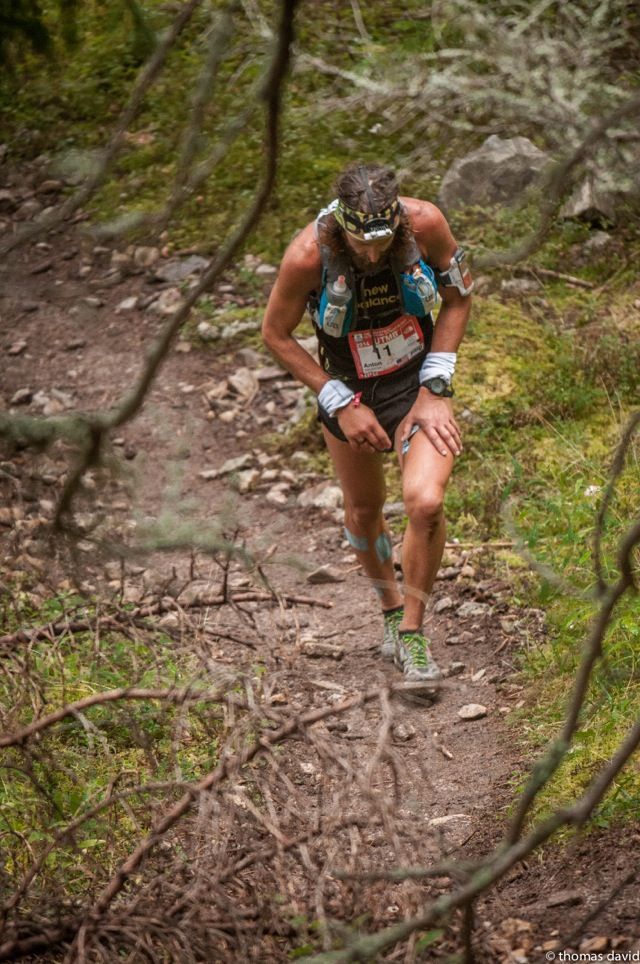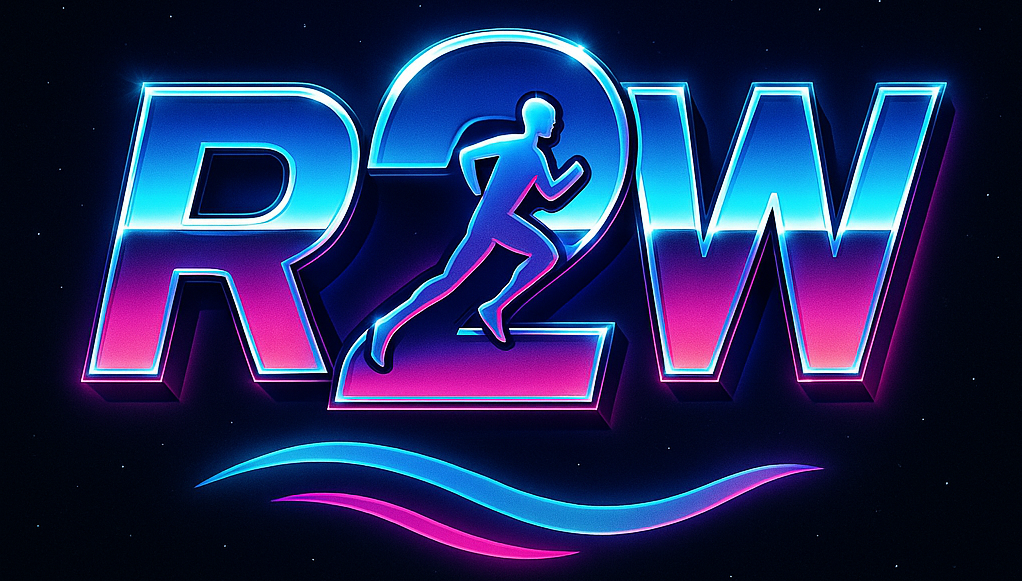 Adventure calls when you decide to combine travel with racing. Whether you lean toward the rugged excitement of a trail run or the multifaceted challenge of a triathlon, choosing the right race for your next travel adventure can completely change your perspective on fitness and exploration. In this article, I share my thoughts on how to make an informed choice that suits your goals, fitness level, and sense of adventure.
Adventure calls when you decide to combine travel with racing. Whether you lean toward the rugged excitement of a trail run or the multifaceted challenge of a triathlon, choosing the right race for your next travel adventure can completely change your perspective on fitness and exploration. In this article, I share my thoughts on how to make an informed choice that suits your goals, fitness level, and sense of adventure.
If you’ve ever wondered how to find a race that not only tests your endurance but also satisfies your wanderlust, you’re in the right place. Racing while traveling provides a unique opportunity to not only push your physical limits but also immerse yourself in diverse cultures and breathtaking natural settings. With every race, there is also a fascinating story waiting to unfold, full of local traditions, regional cuisines, and scenic routes that make every step meaningful. Small adjustments in planning can lead to big improvements in both your travel experience and race performance.
The following sections break down key aspects to consider when choosing between trail runs and triathlons. From understanding your personal racing style to logistical planning and final race-day preparations, this guide offers practical tips and deeper insights to help you decide on the perfect race for your next travel adventure. As you read on, you’ll find that every detail matters—from the terrain under your feet to the cultures you encounter along the way.
1. Understanding Your Racing Style: Trail Runs vs Triathlons
Before you jump into booking a race, it’s important to identify what type of challenge excites you the most. Trail runs often involve running on natural terrain, where unpredictable paths and eye-catching views add an extra layer to the experience. On the other hand, triathlons combine swimming, biking, and running, offering a diverse challenge that tests different muscle groups and skills. The decision between these two options can depend on whether you crave solitude and nature or a dynamic blend of athletic disciplines.
Ask yourself these important questions: Do you enjoy the quiet intimacy of winding trails and nature’s embrace, or do you thrive on the rapid changes of switching activities and testing your overall endurance in a triathlon? Reflect on past experiences—perhaps a simple run in the park or a casual bike ride—and consider what aspects made you feel most alive. This period of self-assessment is crucial in matching your interests with the appropriate race type. Taking the time to think over your strengths and preferred challenges will ensure that the race you choose not only aligns with your fitness level but also sparks excitement throughout your training and travel adventure.
Many athletes find that the choice of race style reflects their broader lifestyle preferences as well. For example, if you relish the opportunity to spend hours exploring natural trails while listening to the sounds of the wilderness, then a trail run might be your best bet. Conversely, if you are drawn to the idea of coordinating your skills in swimming, cycling, and running—all within a competitive setting—then a triathlon might be the more fitting option. Both routes offer benefits, and understanding what truly motivates you is the first step toward an unforgettable adventure.
2. Assessing Your Fitness Level and Race Requirements
Evaluating your current fitness level is critical when deciding on the right race. Some events, especially triathlons, require not only endurance but also the ability to perform in multiple disciplines simultaneously. It’s a good idea to honestly assess your strengths and areas for improvement. If you’re more comfortable with running and less experienced in swimming or cycling, starting with a trail run or even a beginner-level triathlon could prove to be a better fit. The goal is to build confidence while gradually challenging your limits.
Take the time to review the specific race requirements: look at the distance, understand the terrain challenges, study the estimated finish times, and be aware of any extra fitness criteria that might be in place. If you’re not quite ready for the full demands of a triathlon, consider starting with a sprint or a shorter distance event where you can incrementally build up your skills. Establishing clear and realistic fitness goals not only helps with selecting the right event but also shapes your overall training plan as you prepare for the challenge ahead.
Furthermore, keep in mind that every race has its own set of unique guidelines. Some races might require pre-qualifications or medical clearances, while others might offer training sessions or preparatory events. These additional requirements can also serve as excellent benchmarks for gauging your readiness. In planning your race, be sure to incorporate a regular assessment of your progress so you can adjust your training schedule as needed. This systematic approach will help ensure that you are fully prepared for the race day challenges.
3. Researching Destinations: Where to Race Around the World
The destination itself can significantly influence your race experience. Many trail runs are set in magnificent natural parks, majestic mountain ranges, or along scenic coastal paths that allow you to truly connect with nature. Meanwhile, triathlons are often hosted in urban environments or around striking water bodies that provide a blend of cultural exposure and athletic challenge. When choosing a location, consider not only the race course but also the overall travel experience that the destination offers.
When researching destinations, check local weather conditions, altitude, and specific characteristics of the terrain. For example, if you thrive in cooler climates with lush green forests, a race held in the Pacific Northwest might be ideal. Alternatively, if the idea of racing by the refreshing ocean or a vibrant city excites you, seek out events in coastal regions or historic metropolises. Delving deeper into local travel guides, reading reviews from past participants, and even connecting with local athletic communities can provide invaluable insights into the event and location.
This planning phase is not just about the race itself—it’s also about the adventure that comes with exploring new parts of the world. Take time to plan what you might do during downtime between races. Whether it’s visiting local museums, sampling regional cuisines, or strolling through historic neighborhoods, every additional experience enriches your overall journey. The more you learn in advance about your destination, the more prepared you will be to make the most of your travel and racing experience.
4. Designing Your Training Plan for Travel Races
A well-rounded training plan is essential to ensure you are fully prepared on race day. Once you settle on a particular race, look closely at your available time and how best to invest it in your training. Trail runs may require a specialized regimen focused on hill sprints, trail-specific endurance, and adapting your stride to unpredictable surfaces. In contrast, triathlons demand a balanced training approach that covers swimming, cycling, and running in equal measure and with consistent practice.
Plan your training weeks by allocating specific days for each discipline and ensuring that you include ample rest and recovery periods to prevent burnout. It’s important to gradually transition from your regular workout routine to a more targeted race-focused training schedule, especially if you will also be traveling in the days leading up to the event. Think about incorporating simulated race conditions—a mix of long distances and variable terrain—to better acclimate your body to what lies ahead.
Consider researching local training clubs, gyms, or even small group runs available near your race destination. Joining these groups can offer new perspectives on race preparation and also familiarize you with the local environment ahead of time. Establishing a realistic and flexible training plan can boost your confidence and set you up for a smoother transition from practice to performance on race day.
5. Planning Logistics: Travel, Accommodation, and Registration
Race day is only one part of the overall adventure. The journey to the event and the logistics involved in getting there are equally important. Begin your planning by reviewing the event’s registration details, including deadlines, fees, and any necessary health or certification requirements. Early registration often provides access to additional resources such as training sessions or local meet-ups that can be very beneficial.
After you’ve secured your spot in the race, shift your focus to travel logistics. Book your flights, accommodation, and ground transportation well ahead of time to benefit from better prices and availability. Look for lodging options that are in close proximity to the race venue to cut down on travel hassles once you arrive. It can also be helpful to contact the race organizers and ask about pre-race events, shuttle services, or even local guides. These additional supports can really take the stress out of your travel day and help you feel more prepared when the race begins.
Make sure you have all your travel documents in order and prepare a detailed packing list that includes not only race gear but also items for leisure and comfort. Double-check the weather forecast for your destination so that you can pack the appropriate clothing and accessories. By organizing these logistical details in advance, you ensure that you can focus fully on your race performance and overall adventure once you’re on site.
6. Gear Up: Choosing Equipment for Trail and Triathlon Races
Having the right equipment can truly make or break your race experience. For trail runs, essential gear might include sturdy trail running shoes, moisture-wicking clothing, hydration packs, and even trekking poles if the terrain is especially rugged. The correct gear not only increases safety but also maximizes comfort while navigating varying surfaces.
When it comes to triathlons, preparation is even more specific. In addition to a good pair of running shoes, you may need a well-maintained bike, a dependable wetsuit, and accessories tailored for each stage of your event. Spend time researching the best options and reading reviews from both race organizers and fellow athletes to help you make educated decisions about your equipment. Testing your gear during practice sessions is essential to ensure everything is in working order and comfortable over long distances.
Creating a detailed checklist can be very useful in ensuring that no component is overlooked on race day. Consider every piece of equipment a potential factor in your performance—from your nutrition supplies to your emergency repair tools for your bike. By planning ahead and investing in quality gear, you not only give your performance a boost but also reduce the risk of unexpected setbacks during your race.
7. Nutrition and Hydration Strategies for Endurance Challenges
Every race demands thoughtful consideration of fueling your body properly. A well-developed nutrition strategy is very important for maintaining stable energy levels during long and challenging events. For trail runs, it pays to focus on portability; keep items like energy bars, gels, and electrolyte drinks close at hand to sustain your pace on uneven terrain.
Triathlons, due to their longer duration and diverse physical demands, require a more detailed nutritional plan. It helps to plan meals and snacks that offer a balanced blend of carbohydrates, proteins, and healthy fats. Experiment with different food combinations during training sessions to see what works best for you, and try to mimic race-day conditions as closely as possible. Adjust your intake based on the climate and humidity of the race location, as hotter conditions might call for increased hydration or altered food choices.
In addition to solid nutrition practices, consider scheduling regular hydration breaks and setting reminders during training. Bringing along electrolyte solutions and monitoring your fluid intake can help you maintain both performance and overall well-being during the race. A thoughtful nutrition plan not only supports your physical performance but also helps to keep your mind alert and focused under race conditions.
8. Mental Preparation: Building Confidence for Race Day
Racing is as much a mental challenge as it is physical. Preparing your mind for race day can help reduce pre-event jitters and boost your overall performance. Techniques like visualization, setting clear goals, and maintaining a positive mindset are very important strategies to ensure you remain calm and focused during the competition.
Spend time reflecting on your previous achievements, whether they come from smaller local events or everyday workouts. By celebrating every bit of progress, you reinforce your belief in your abilities. Creating a mental checklist that includes your warm-up routine, pacing strategy, and even specific motivational cues can work wonders on the day of the race. This level of mental preparation ensures that even if challenges arise, you are mentally equipped to handle them.
Other methods that can help prepare your mind include deep breathing exercises, mindfulness practices, and even talking with a supportive friend or coach ahead of time. These techniques can help you spot potential stressors and give you ways to manage them effectively. When you step up to the starting line, you will have the combined strength of both physical and mental readiness to see you through to the finish.
9. Balancing Adventure with Competition: Community and Solo Races
Your choice of race might also be influenced by the kind of social experience you’re after. Some people love the camaraderie of group races where you share the excitement with others, while some prefer the solitary challenge of competing on their own. Both types offer unique rewards and cater to different personality types.
If you enjoy meeting new people and learning from fellow athletes, consider choosing races that feature a strong community spirit. Many events organize pre- and post-race social activities, which provide opportunities to exchange travel insights, training tips, and even local cultural tidbits. These interactions often lead to lasting friendships and add an entirely new dimension to your racing experience.
On the other hand, if you are looking for personal reflection and the thrill of an individual challenge, solo races might be more appealing. Racing on your own allows you to focus entirely on your personal journey, your pace, and your internal dialogue throughout the race. Sometimes, having a mix of both experiences can be the most rewarding choice—a personal challenge that also offers moments of shared celebration with others. Take time to think about which environment suits your personality and goals best.
10. Tapering and Race Day: From Training to Execution
The final phase before the race is all about transitioning from rigorous training to performing at your peak. Tapering, which involves gradually reducing your training intensity about one to two weeks before the event, helps your body recover and gear up for the main challenge. This process is very important in ensuring that you are well-rested and physically ready to tackle the race course.
Develop a clear tapering schedule that allows you ample time to rest while still keeping your muscles active through light workouts. Utilize this period to double-check all your gear, revisit your nutrition strategies, and confirm all logistical details. Prepare a detailed checklist for race day that includes essentials such as your race bib, hydration supply, clothing layers, and warm-up routines.
On race day, start your morning with a light meal and a dynamic warm-up routine to set your body in motion. Arriving early at the venue can help you adjust to the surroundings and settle any last-minute nerves. By following a well-planned taper approach and a thorough pre-race routine, you can step up to the starting line confident and ready for the challenge ahead.
Final Thoughts
Choosing the perfect race for your travel adventure is more than simply picking a date and location. It means aligning your personal goals with your fitness level and the type of experience that resonates with you. Whether you decide on the immersive challenge of a trail run or the dynamic test of a triathlon, careful planning and consistent preparation will not only boost your performance but will also enrich your travel memories.
Every race offers a chance to explore new paths, push past your limits, and create memories that extend well beyond the finish line. By assessing your personal strengths, researching destinations, crafting a meticulous training plan, and preparing both physically and mentally, you can turn a race into a transformative adventure. Your journey will be filled with moments of exhilaration, insightful discoveries about your own resilience, and perhaps even new friendships formed along the way.
Take this advice to heart as you plan your next race-themed travel adventure. Reflect on your past experiences, set realistic and clear goals, and most importantly, enjoy each moment of the process. The race you choose will not only test your endurance but also offer a unique lens through which you can appreciate the beauty of both your chosen sport and the world at large. Which race adventure are you leaning towards for your next journey? The possibilities are endless and every step is a chance to learn, grow, and create unforgettable experiences.
Remember, preparing for a race is a holistic process that combines physical training, logistical planning, and mental conditioning. By taking the time to meticulously plan every detail—from your training regimen to your travel itinerary—you are ensuring that the race day is not just about competing, but truly about embracing an adventure that enriches your life in many powerful ways.
Bottom line: every race and every travel experience builds a part of your personal story. Enjoy the ride, celebrate your small victories, and let every mile spur you on to greater heights. This is more than an event; it is an opportunity to explore uncharted territories within yourself and the world around you.

Every hill is just another opportunity to rise above
